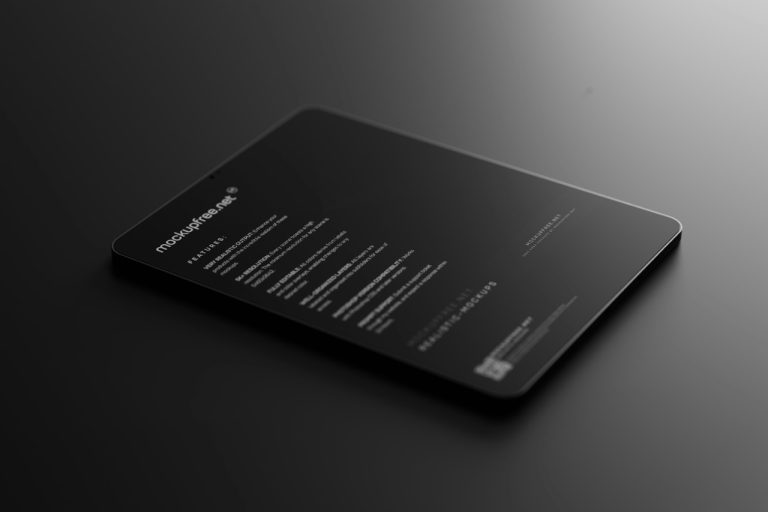
In contemporary food business, information is included in a successful business model. Data-Driven Culinary Management creates new opportunities for restaurants and other businesses to not only cut costs but also maximize the delivery to the consumers. Here, we will explain how information changes traditional ways of cooking and facilitates more effective decision-making.
Value of data in modern cooking
Food information is helpful in numerous ways. The following are the key points that are noteworthy:
- Customer needs: With analysis of customer preference data, restaurants can design menus and offers suitable to the needs of the audience, thus enhancing customer satisfaction and loyalty.
- Inventory optimization: With the sales and consumption history in mind, the restaurants can optimize their inventories such that the storage cost remains low and there is less food wastage.
- Improved marketing: Feedback on how users respond to advertising campaigns and menu updates enables you to organize the marketing efforts in the optimal manner and direct marketing messages towards customers.
- Increased efficiency of operations: Gathering and processing information about production process acts allows for more bottlenecks to be established and the optimum service time to be achieved, hence the overall facility enhancement.
Purpose and objectives of the article
Our paper’s main purpose is to demonstrate how data can transform the Data-Driven Culinary Management style of a kitchen. We have a number of objectives:
- Discuss the kinds of data that are used when cooking, such as sales data, consumer comments and social network activity.
- Offer readers tools for data analysis used, some of the latest technology and applications used.
- Offer restaurant success stories of how they modified their strategy with consumer behavior analysis.
In short, we stress that technology and data are not tendencies, but rather unstoppable tools for the restaurant industry. Ignoring their potential may lead to uncompetitiveness. Logical utilization of information and expert analysis can be those conditions that bring your business to a new level.
Data types in the kitchen: raw foods to consumer responses

Data usage in managing a cooking business has become an essential part of the recipe for success in Data-Driven Culinary Management today. The amount and diversity of data collected in this industry provide fertile ground for analysis and wise decision-making. Consider the best data types that can make your business plan.
See how our Data Analytics insights help drive AI-powered user experiences.
Sales data
This data is helpful in planning the most popular dishes and drinks to entice the most customers. These figures can be used to:
- Examine top-selling outlets.
- Find seasonal patterns and changes in consumer behavior.
- Simplify the menu by getting rid of unpopular items.
Consumer preference data
Having an idea of what your customers desire allows you to personalize offers. Here, it is advisable to consider:
- Number of orders served
- Best-selling products served
- Segmentation of consumers by age and demographic.
- Seasonal preference variability.
- Specificity and tendency of some diets (vegetarianism, gluten-free, etc.).
Social networks and word of mouth
As social networks are unfolding, word of mouth is becoming one of the primary channels of information. It is also worth noting:
- Analysis of reviews on Google, TripAdvisor and Instagram.
- Use hashtags and keywords to know the opinion about your business.
- Customer interaction: how to respond quickly to criticism and appreciation. on the internet.
Supplier and raw material information
Celadonsoft: Homogeneity of product quality affects your company’s reputation. You should obtain here information on:
- Quality and freshness of ingredients.
- Performance and reliability of suppliers.
- Price and availability of raw materials for saving money.
The flow of information from the central ingredient to consumer opinions generates a unique mosaic that allows cooking firms to make more informed choices. Merging these many sources of information into a single strategy opens up new possibilities for restaurants to control and improve quality of service.
Thus, knowing and utilizing different types of information will be the pillar of culinary strategic planning that will guarantee long-lasting success in an environment of competitiveness.
Data analysis software for culinary businesses
In modern culinary business management, using analytical tools is part of a successful business. Some of the key technologies and software that might help cooks analyze data are given below:
- Restaurant management systems (POS system)
Current POS software such as Toast and Square allow to compile and analyze sales data in real-time. This allows managers to track bestsellers and optimize promotions.
- Analysis platforms
Platforms such as Tableau and Power BI offer data visualization, which allows chefs to see how multiple variables affect sales and customer preference.
- Feedback management platform
Yelp and TripAdvisor tools can be connected to analytical systems to monitor customer ratings and reviews. Not only does it offer the capability to see the progress in real time, but also to identify where improvement is required.
- Social networks and analytical tools
Utilities such as Sprout Social and Hootsuite help track social media chatter and trends, which are an ample source of information when it comes to consumer preferences.
Data visualization and interpretation techniques play a fundamental role in understanding and decision-making. The use of graphs and charts, for example, helps simplify complex data into something easy to see, which is especially essential for an inexperienced analysis team.
Case-stage of effective application of analytics in cooking
Celadonsoft: Effective examples of application of analytics in cooking encourage other enterprises. One such is the Chipotle restaurant chain. They applied an algorithmic approach to analyzing data, through which they:
- Maximized the menu: based on demand analysis, restaurants rebuilt dish popularity, canceled low-value dishes, added new ones, thereby increasing revenue in general.
- Improve customer experience: With preference data, Chipotle can anticipate their customers’ needs and offer them relevant offers.
Domino’s Pizza is another case in point. They applied analytics to the delivery process, which allowed:
- Improve delivery time and routes. The orders are received faster by the customers and the company saves on expenses.
- Leverage a predictive analytics solution that helps forecast demand by hour of day and holidays.
These examples demonstrate how data can revolutionize the cooking industry, with higher profits and better interaction with customers. Due to the right integration of analytics into business processes, companies can establish themselves well in the market, prepared for new challenges and customer requirements.
Ethics and accountability of data processing in cooking management
Celadonsoft: The future of cook management relies on making decisions using information. Yet with increased information harvesting, one has to consider the reality that we have to deal with ethics and responsibility for managing the data processing. One has to keep in perspective throughout this section of the article the most important issues to this question and provide solutions to their elimination.
Security of consumer personal data
Gathering and keeping consumers’ details, their preferred dishes and even dietary regime, ought to be done with discretion for confidentiality.
There must be solid information protection mechanisms to safeguard against data leakage and loss of customer trust. This may include encryption of data, anonymization of customers and protected servers.
Challenges and issues of data work
- Consent to data use: Make sure customers have clear consent to their data processing. It can be done through more prominent terms which users can merely glance over.
- Fairness in algorithms: In using algorithms to predict consumer behavior, there is a need to provide non-discrimination and equality across different audience segments.
- Data errors: As decision-making is analysis-driven, there should be monitoring of data quality being collected. Misinformation would lead to meaningless policy interventions.

Transparency in processes
Celadonsoft: The brand should be transparent about data processing and data collection processes, e.g., customers being in control of their data use.
To produce clear and simple reports on data usage would assist in client loyalty and trust building.
Employee training
There is a need for regular training of staff dealing with data, to keep them updated on the newest legislative and ethical developments.
These could include issues such as personal data protection and ethical principles’ application to analytics.
Cooking schools that take the trouble to deal with matters of ethics and data responsibility not only safeguard their business, but also promote consumer confidence, which is a requisite in today’s marketplace. In the long run, establishing good ethical standards and living up to their principles can be a source of competitive edge over other schools.
Future of cooking: Trends and innovation in data analysis
There are several trendy features that characterize the future of this high-speed occupation in culinary management. Technology never stops evolving, and the utilization of data as a tool to make decisions is a central pillar of a successful cooking business. Consider the significant trends that will shape culinary management in the future:
- Artificial intelligence and machine learning: They allow you to handle big data, find hidden patterns and automate. Restaurants will be able to predict customer decisions based on previous purchases.
- Internet of Things (IoT): Real-time monitoring devices for products and equipment are gaining popularity. They can track temperature, humidity and shelf life, which almost completely eliminates the risk of loss due to spoilage.
- Big data analytics: Extensive data harvesting and processing will allow businesses to make better choices. Application of advanced analysis technologies makes customized offerings for clients viable.
- Sustainable development and ecology: Awareness for ecology is getting integrated into cookery management. Rationalization of supplies and minimum loss using data assistance are turning into ethical measures as well as profitable.
- Virtual and augmented reality software: These have been employed to design custom gastronomical experiences and enrich customer engagement so they can experience the menu and ambiance of the restaurant before a visit.
Conclusion: Informed decision-making toward sustainable development
Thus, the integration of metrics into strategic planning becomes the hallmark to sustainable culinary business development. Analytical and evidence-based decision-making will streamline operations as well as customers’ satisfaction. We recommend food professionals take heed of the following:
- Investment in technology: Plan to implement the newest technology and machinery for data collection and analysis so that they do not lag behind the rivals.
- Feedback Management: Monitor the feedback of the customers diligently and use it for improving the quality of services and products.
- Training the team: Invest time in training personnel to handle data and new technology in order to derive best from analytics.
- Continuous improvement: Employ a circular decision model: collect data, analyze data, change and collect data again.
With the above, food businesses with data at the hub of their operations can not only remain abreast of developments in the marketplace, but outmaneuver rivals through the creation of new products and ensuring sustainable growth.


